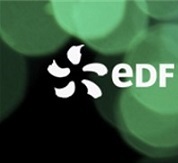Energy efficiency of oxygen enriched air production technologies: Cryogeny vs membranes
Résumé
Oxygen Enriched Air (OEA) is already used for numerous chemical, medical and industrial applications (e.g. combustion enhancement for natural gas furnaces, coal gasification) and more recently attracted attention for hybrid carbon capture processes. Membrane separation has shown growing interest for OEA production, providing an alternative to conventional air separation processes such as cryogenic distillation and pressure swing adsorption. Nevertheless, based on the current polymeric materials performances, membranes are usually considered to be competitive only for medium O-2 purity (25-40%) and small scale plants (10-25 tons/day). Improvement in membrane materials permeability and permselectivity (O-2 over N-2) is often reported to be a critical issue in order to increase the attainable O-2 purity and to make the process more energy efficient. Recently, several membrane materials have been reported to show performances far above the permeability/selectivity trade-off of dense polymers. In this study, the potential of current and prospective membrane materials to achieve OEA production thanks to a single stage process is analysed through a rigorous simulation approach. The two processes (membrane and cryogenic distillation) are finally critically compared in terms of energy efficiency (kW h/ton O-2), depending on O-2 purity and on membrane material selectivity levels.

